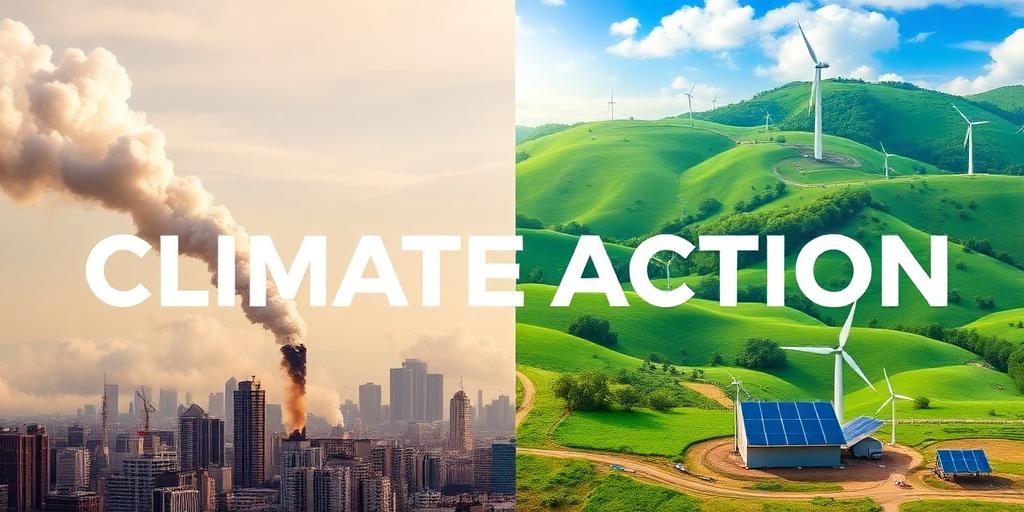Adapting to Climate Change: Lifestyle Adjustments for 2025
Climate change is no longer a distant threat; it’s a present reality. As we approach 2025, adapting our lifestyles to mitigate its effects is becoming increasingly crucial. This article provides an informative overview of practical adjustments individuals can make to contribute to a more sustainable future.
1. Transportation
The transportation sector is a significant contributor to greenhouse gas emissions. Consider these adjustments:
- Embrace Electric Vehicles (EVs): As technology advances, EVs are becoming more affordable and accessible. They produce zero tailpipe emissions, reducing your carbon footprint.
- Utilize Public Transportation: Buses, trains, and trams are efficient alternatives to individual car use. Plan your routes and schedules to integrate public transit into your daily commute.
- Cycle or Walk: For shorter distances, opt for cycling or walking. These options are not only environmentally friendly but also beneficial for your health.
- Carpooling: Share rides with colleagues, friends, or neighbors to reduce the number of cars on the road.
2. Home Energy Consumption
Reducing energy consumption at home can significantly lower your environmental impact:
- Invest in Energy-Efficient Appliances: Look for appliances with high Energy Star ratings. These appliances use less energy, saving you money and reducing emissions.
- Install Solar Panels: Generate your own electricity with solar panels. Government incentives and decreasing costs make solar energy a viable option for many homeowners.
- Improve Insulation: Proper insulation reduces the need for heating and cooling, lowering energy consumption. Seal windows and doors to prevent drafts.
- Use Smart Thermostats: These devices can automatically adjust the temperature based on occupancy and weather conditions, optimizing energy use.
3. Diet and Food Consumption
The food industry is a major source of greenhouse gas emissions. Adjust your diet to promote sustainability:
- Reduce Meat Consumption: Meat production, particularly beef, has a high environmental impact. Opt for plant-based alternatives or reduce your meat intake.
- Buy Local and Seasonal Produce: Locally sourced food reduces transportation emissions and supports local farmers. Choose seasonal produce to minimize the need for energy-intensive farming practices.
- Minimize Food Waste: Plan your meals, store food properly, and compost food scraps to reduce waste. Food waste in landfills contributes to methane emissions.
- Grow Your Own Food: Start a garden to grow your own fruits, vegetables, and herbs. This reduces your reliance on commercial agriculture and provides fresh, healthy food.
4. Water Conservation
Water scarcity is an increasing concern due to climate change. Conserving water is essential:
- Install Low-Flow Fixtures: Replace old faucets, showerheads, and toilets with low-flow models to reduce water consumption.
- Collect Rainwater: Use rain barrels to collect rainwater for watering your garden or washing your car.
- Water Wisely: Water your lawn and garden during the cooler parts of the day to minimize evaporation. Use a watering can or soaker hose to target plants directly.
- Fix Leaks: Repair any leaks in your plumbing system to prevent water waste.
5. Waste Reduction and Recycling
Reducing waste and maximizing recycling efforts are crucial for minimizing environmental impact:
- Reduce Single-Use Plastics: Avoid single-use plastics by using reusable shopping bags, water bottles, and food containers.
- Recycle Properly: Follow your local recycling guidelines to ensure that materials are properly processed. Clean and sort recyclables to avoid contamination.
- Compost Organic Waste: Compost food scraps, yard waste, and paper products to create nutrient-rich soil for your garden.
- Buy Products with Minimal Packaging: Choose products with minimal or recyclable packaging to reduce waste.
6. Consumer Choices
Making informed consumer choices can drive demand for sustainable products and practices:
- Support Sustainable Brands: Choose brands that prioritize environmental sustainability in their production processes and supply chains.
- Buy Secondhand: Purchase used clothing, furniture, and electronics to reduce the demand for new products.
- Repair and Repurpose: Repair broken items instead of replacing them. Repurpose old items to give them a new lease on life.
- Avoid Fast Fashion: Fast fashion contributes to environmental pollution and waste. Invest in durable, timeless pieces that you can wear for years.
Conclusion
Adapting to climate change requires a collective effort. By making these lifestyle adjustments, individuals can play a significant role in mitigating the effects of climate change and creating a more sustainable future for generations to come. As we approach 2025, let’s commit to making these changes and working towards a healthier planet.
